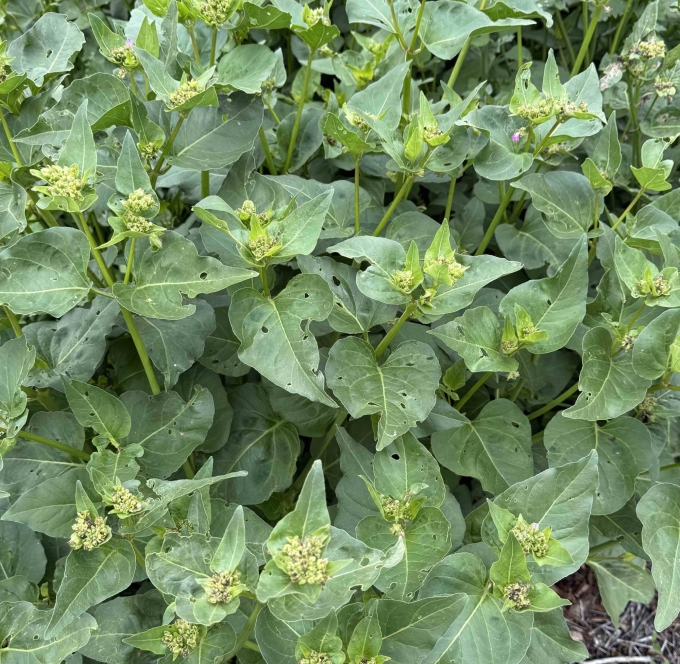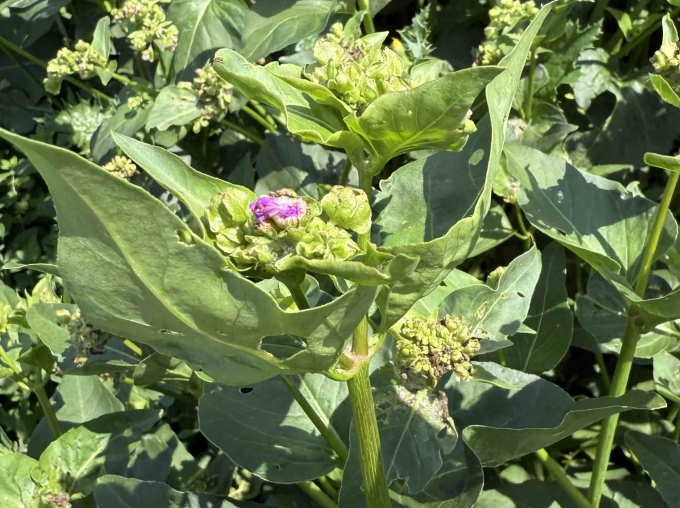Common Name: Wild Four O’Clock, Heartleaf Four O’Clock
Family: Nyctaginaceae (Four O’Clock Family)
Plant Type: Herbaceous Perennial
Native Range: Central and western North America, including throughout Nebraska
Hardiness Zones: 3–9
Height: 2.0 to 4.0 feet
Spread: 1.5 to 3.0 feet
Bloom Time: Late spring to fall (May–September in Nebraska)
Bloom Description: Clusters of tubular, magenta to purplish-pink flowers that open in late afternoon or on cloudy days
Sun Exposure: Full sun to part shade
Water Needs: Low
Soil Preference: Well-drained soils; tolerates dry, sandy, or rocky soils and disturbed sites
Maintenance Level: Low
Suggested Use: Prairie restorations, naturalized areas, pollinator gardens, roadside plantings
Attracts: Native bees, moths, butterflies, beneficial insects
Tolerates: Drought, poor soils, heat, disturbance
Notable Features: Deep taproot for drought survival, unique flowering habit (opening late in the day), native to Nebraska
Nebraska Growing Notes:
Wild Four O’Clock is a tough and adaptable native prairie perennial that thrives in Nebraska’s dry, sunny landscapes. Well-suited to sandy, rocky, or otherwise poor soils, it tolerates drought and neglect thanks to its deep taproot.
Flowers appear from late spring through summer and are notable for opening in the late afternoon or evening, which gives this plant its common name and makes it valuable for evening pollinators like moths.
It spreads modestly and can sometimes become weedy in disturbed areas but is easy to manage in prairie and restoration settings. Foliage can look coarse late in the season but remains functional for pollinators and wildlife.
Landscape Use:
Ideal for prairie restorations, dry wildflower gardens, naturalized roadsides, and low-maintenance pollinator habitats. Combines well with native grasses, Ratibida columnifera, Coreopsis, Penstemon, and Liatris in xeric settings.
Caution:
Not considered toxic but may be aggressive in disturbed or open soils due to its ability to self-seed and regenerate from its taproot. Not ideal for formal gardens due to its coarse texture and spreading habit.
Garden Locations:
Sources:


